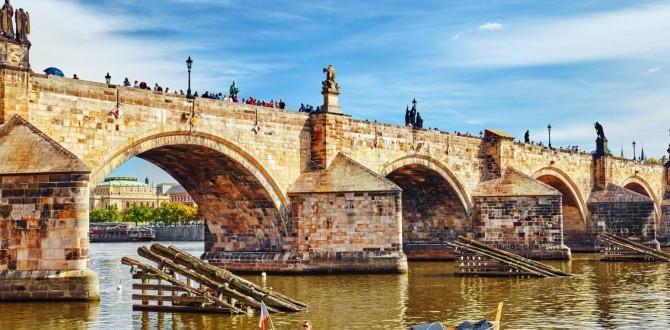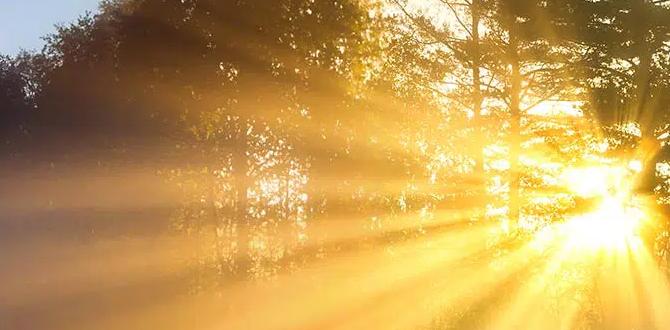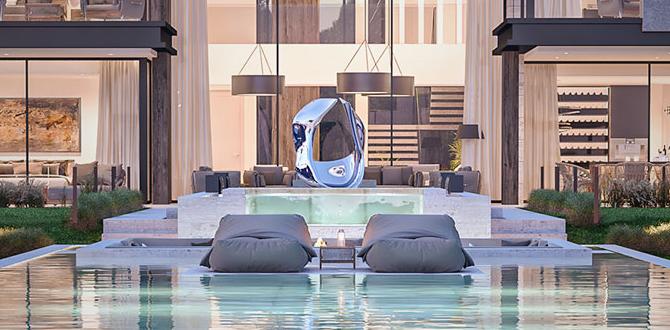Bhutan’s daily budget is often cited as $200-$250 USD per person per day, but this figure usually covers a minimal “Sustainable Development Fee.” A more realistic daily budget for comfort and experiencing Bhutan, including meals, activities, and incidentals, can range from $100-$150 USD, in addition to the mandatory fee. This guide breaks down what to expect so you can plan your trip with confidence.
Planning a trip to the magical Kingdom of Bhutan can feel a bit like stepping into a fairytale. Known for its stunning landscapes and unique culture, it’s a destination many dream of visiting. However, understanding the costs involved can sometimes feel as mysterious as Shangri-La itself. Many travelers worry about hidden fees or how much to budget for daily expenses. Don’t let budget uncertainty dim your travel excitement! Journey Essentials is here to demystify Bhutan’s travel costs, providing a clear, step-by-step breakdown to help you plan your adventure without any surprises. We’ll cover the essentials so you can focus on packing your bags and preparing for an unforgettable experience.
Bhutan Travel Cost FAQs
Is Bhutan really expensive to visit?
Bhutan is known for its high daily tariff system, which historically made it one of the more expensive destinations. However, recent policy changes aim to make it more accessible. The mandatory Sustainable Development Fee (SDF) is a significant part of the cost, but understanding all the associated expenses will give you a clearer picture of the overall budget.
What is the Sustainable Development Fee (SDF)?
The SDF is an amount charged per tourist, per night, to support Bhutan’s development, conservation, and tourism infrastructure. It’s reinvested into the country’s well-being. The fee has been adjusted over time, and it’s crucial to check the current rate before your trip.
Does the daily budget include the SDF?
Typically, online discussions about Bhutan’s daily costs might mention figures that include the SDF. However, it’s best to consider the SDF as a separate, mandatory fee and then budget for your actual daily expenses (meals, activities, souvenirs) on top of that. This guide will help you differentiate.
What are the main components of a daily budget in Bhutan (besides the SDF)?
Besides the SDF, your daily budget will primarily cover accommodation, food, transportation within Bhutan, guide services (often included in tour packages), entry fees to attractions, and personal spending like souvenirs. The specific amounts will vary based on your choices.
Are there ways to make visiting Bhutan more affordable?
While Bhutan maintains its high-value, low-impact tourism policy, certain choices can influence your overall spend. Traveling during the shoulder seasons, opting for simpler guesthouses, and being mindful of your souvenir purchases can help manage costs. Booking a package tour might also offer better value.
Do I need to budget for tips in Bhutan?
Tipping is not mandatory in Bhutan like it might be in some Western countries. However, it is appreciated for guides and drivers who provide excellent service. Small, voluntary tips are common and can be factored into your discretionary spending.
What is the currency in Bhutan?
The official currency is the Bhutanese Ngultrum (BTN). Indian Rupees (INR) are also widely accepted. It’s a good idea to carry a mix of currencies and be aware of the exchange rate, though ATMs are available in major towns for withdrawing Ngultrums.
Understanding Bhutan’s Tourism Policy: The Foundation of Your Budget
Bhutan’s approach to tourism is unique and intentionally designed to preserve its culture and environment. This is why you won’t find budget hostels or backpacking circuits like in some other parts of Asia. The cornerstone of this policy is the mandatory Sustainable Development Fee (SDF) for all tourists. Understanding this fee is the critical first step in budgeting for your Bhutanese adventure.
The SDF is not just a tourist tax; it’s an investment in the nation’s future. The revenue generated is used for various developmental projects, including free healthcare and education for Bhutanese citizens, infrastructure development, and environmental conservation efforts. This commitment to sustainable tourism ensures that your visit contributes positively to the Kingdom.
Up until recently, tourists were required to book through a licensed Bhutanese tour operator and pay a minimum daily package rate ($200-$250 USD/day), which covered the SDF, accommodation, meals, guide, and internal transport. However, in a move to boost tourism post-pandemic, the government has revised this system. Now, tourists pay the SDF directly, and then arrange their own accommodation, food, and transport.
The Sustainable Development Fee (SDF)
The SDF amount has seen adjustments. As of recent updates, there’s a daily fee that can vary. For international tourists (excluding Indian, Bangladeshi, and Maldivian nationals), a common rate cited is around $100 USD per person per night. It’s essential to check the official Tourism Council of Bhutan website for the most current rates before you plan your trip, as these can change. Here’s a general idea of what to expect, but always verify:
- Current SDF: Approximately $100 USD per person per night for most international tourists.
- Exclusions: Nationals from India, Bangladesh, and the Maldives have different fee structures, often significantly lower or a fixed entry fee.
This fee is usually paid upon booking your visa or can be paid directly before your arrival. Many tour operators will help facilitate this payment. This fee is crucial and non-negotiable.
How SDF Impacts Your Budget
Let’s say you plan a 7-day trip to Bhutan. With an SDF of $100 USD per night, the SDF alone would be $100 USD x 6 nights (leaving on day 7) = $600 USD. If you add the arrival and departure day, it could be $700 USD. This sets your baseline cost. Your daily budget for everything else will be in addition to this mandatory fee.
A Realistic Daily Budget Beyond the SDF
Once the mandatory SDF is accounted for, you need to budget for the actual experiences and comforts during your stay. While Bhutan is not a cheap destination by design, you can certainly find ways to manage your daily spend effectively. The following breakdown provides an estimated range for what you might spend on an average day, assuming you’re not on the absolute cheapest or most luxurious end of the spectrum.
It’s important to note that the official Bhutanese tourism policy emphasizes experience over extreme budget travel. Therefore, the idea of a “dirt-cheap” backpacker budget doesn’t align with the country’s tourism model. However, for travelers seeking value and comfort, a daily expenditure of $100-$150 USD per person on top of the SDF is a reasonable estimate.
Accommodation Costs
Bhutan offers a range of accommodation options, from comfortable three-star hotels to charming, locally-owned guesthouses. Luxury hotels (like Aman Resorts or Six Senses) can cost upwards of $1000+ USD per night, but these are usually all-inclusive and often have their own SDF factored in. For travelers looking for good value with comfort:
- Three-Star Hotels/Comfortable Guesthouses: Expect to pay between $50 – $100 USD per night. These often include breakfast.
- Budget-Friendly Options: While rare, some simpler guesthouses might be found for $30-$50 USD per night, though amenities can be basic.
Most package tours include accommodations in comfortable three-star hotels as standard. If booking independently, factor in breakfast if it’s not included, as you’ll need to purchase it separately.
Food and Drink
Bhutanese cuisine is hearty and flavorful, often featuring chili and cheese. Meals can be a delightful part of your experience. Your actual daily food cost will depend on where you eat:
- Local Restaurants/Cafes: A decent meal at a local restaurant can cost between $5 – $15 USD.
- Hotel Restaurants: Dining in hotel restaurants, especially in larger towns, might range from $15 – $30 USD per meal.
- Street Food/Snacks: While less common in tourist areas, simple snacks can be very affordable, perhaps $1-$3 USD.
- Beverages: Bottled water is essential and costs around $1 USD. Local beer can be $3-$5 USD. Importation of alcohol can increase costs.
If you are not on a guided tour that includes meals, budget approximately $40 – $60 USD per day for three meals and drinks.
Transportation Within Bhutan
Getting around Bhutan typically involves private vehicles and drivers, especially if you’re traveling outside the main towns. This offers convenience and flexibility, and is often arranged by tour operators. If you’re arranging this yourself or on a less comprehensive package:
- Private Car and Driver: This is the most common and comfortable way to travel. Costs can range from $80 – $150 USD per day, depending on the vehicle and duration. This usually includes the driver’s expenses and fuel.
- Local Taxis: Available in towns like Thimphu and Paro for short trips, these are significantly cheaper, perhaps $5-$15 USD for a trip across town.
- Bus Services: Public bus services exist between major towns but are not as convenient for tourists wanting to stop at various sites. These cost only a few dollars.
The majority of independent travelers will opt for a private car and driver, making this a significant portion of the daily budget if not bundled into a tour. Budget $80-$100 USD per day for this if separate.
Activities and Entry Fees
While many attractions in Bhutan are free to enter, some specific sites may have small entrance fees. A guided tour will often include these. If you’re traveling independently, be aware of potential costs:
- Dzongs and Monasteries: Entrance fees are usually minimal, ranging from $5 – $15 USD per person. Some may be included in local guides or package tours.
- Cultural Performances: Special Bhutanese cultural shows, if arranged privately, can cost $50 – $150 USD or more, depending on the size and nature of the performance.
- Trekking and Hiking: While trekking routes themselves are free, hiring guides and porters for longer treks will add to your costs.
- Museums and Galleries: Entry fees are generally between $3 – $10 USD.
Budget around $15 – $30 USD per day for activities and entry fees, unless you are planning a specific high-cost activity like a multi-day trek.
Souvenirs and Personal Spending
Bhutan is known for its beautiful handicrafts, textiles, thangkas (traditional paintings), and wood carvings. These make wonderful keepsakes. The cost will entirely depend on what and how much you buy.
- Small Souvenirs: Postcards, prayer flags, local stamps can be a few dollars.
- Textiles: Woven textiles can range from $30 for a simple scarf to $500+ for intricate wall hangings.
- Wood Carvings: Small carvings might be $20-$50, while larger, more detailed pieces can be hundreds of dollars.
- Handicrafts: Silverware, masks, and other items vary widely in price.
If you plan to shop, it’s wise to allocate a separate budget for this, perhaps $30-$50 USD per day if you’re a keen shopper, or less if you’re just picking up a few small items.
Sample Daily Budget Breakdown (Per Person, Excluding SDF)
To give you a clearer picture, here’s a sample daily budget for a traveler looking for comfort and a good experience in Bhutan, in addition to the mandatory SDF. This assumes you are on a mid-range budget and not opting for the most luxurious hotels or private fine-dining every night.
| Category | Estimated Cost (USD) | Notes |
|---|---|---|
| Accommodation (3-star hotel/guesthouse with breakfast) | $70 | Can vary based on location and season. |
| Meals (Lunch & Dinner at local restaurants) | $50 | Assumes $25 per meal, including drinks. |
| Transportation (Daily share of private car/driver) | $40 | Based on $80-$100/day for a car, split between 2-3 people. Solo travelers will pay more. |
| Activities & Entry Fees | $20 | Average daily cost for entry to sites. |
| Miscellaneous (Water, snacks, small tips) | $15 | For daily necessities and small gratuities. |
| Total Estimated Daily Spend (Excluding SDF) | $195 | This is a general estimate. |
Important Consideration: The above table shows a higher daily spend than the $100-$150 USD mentioned earlier. This reflects a more comfortable travel style. To achieve the lower end of our estimate ($100-$150), you would need to:
- Share Costs: Traveling with a companion significantly reduces the per-person cost of accommodation and transport.
- Opt for Simpler Guesthouses: Choose more basic, locally-run accommodations within your price range, especially outside major cities.
- Eat More Locally: Prioritize eating at smaller, local eateries rather than hotel restaurants.
- Limit Shopping: Reduce expenditure on souvenirs.
Impact of Travel Style on Budget
Your personal travel style is the biggest determinant of your actual daily expenditure in Bhutan:
- Budget Traveler (Most Minimalist – Very Challenging in Bhutan): Aiming for $50-$80 USD per day (plus SDF). This might involve staying in very basic guesthouses, eating solely at local eateries, and relying on shared transport or buses where feasible. This style is difficult to achieve consistently and offers less comfort.
- Mid-Range Traveler (Comfortable & Experiential): $100-$150 USD per day (plus SDF). This allows for comfortable 3-star accommodation, good meals, private transport, and entry to key attractions. This is the most common and recommended budget for a balanced experience.
- Luxury Traveler: $300+ USD per day (plus SDF). This includes premium hotels, fine dining, private guides, and exclusive experiences.
It’s rare to find comprehensive online resources that detail the exact cost of consumables like a cup of coffee or a local bus ticket. Your best bet is to consult with Bhutanese tour operators, as they have the most up-to-date pricing and can offer package deals that bundle many of these costs, often at a better overall rate. For instance, many tour packages start at around $250-$350 USD per person per day, which includes the SDF, accommodation, meals, guide, and transport. This can simplify planning significantly.
How to Pay and Manage Your Money
Understanding how to pay for your trip and manage your funds in Bhutan is straightforward but requires a bit of planning.
Payment Methods
- Sustainable Development Fee (SDF): This is typically paid in advance through your tour operator or via bank transfer to the Tourism Council of Bhutan. Some online payment portals might also be available.
- Hotels and Tour Operators: Often accept major credit cards like Visa and Mastercard for larger payments, though it’s always wise to confirm this beforehand, especially for smaller establishments.
- Cash: This is king for daily expenses like meals at local eateries, souvenirs, and smaller tips. Bhutanese Ngultrum (BTN) is the local currency. Indian Rupees






